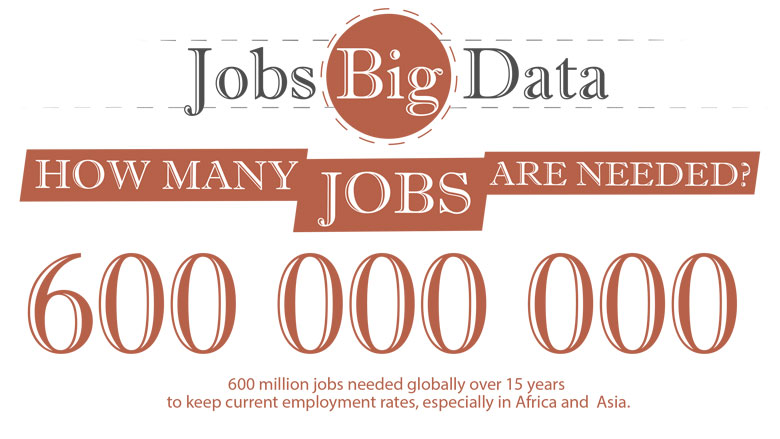The challenge is great. Around the world, over a billion people of working age are not participating in the labor force at all. 200 million are unemployed. And 600 million additional jobs need to be created over the next 15 years. In addition, there is also the major challenge of informality. Just having a job is not enough. At least half of the world’s working population are farmers or self-employed, mostly in low productivity activities like working a small plot of land; selling vegetables or sewing clothes on the street; or offering a range of services you see in urban areas that offer low earnings and little security.
Of the billion people not participating in the labor force, most are women. Those 200 million unemployed? 75 million are under the age of 25. Those informal jobs with poor conditions? Many are held by young people, giving them no hope for a better future.
The general assumption has been that economic growth is sufficient, and that jobs will follow. But evidence shows that this assumption from history is incorrect. Even if it is not, then the time lag for growth to translate into jobs is politically and morally unacceptable. We then need to understand the composition of that growth and who it is leaving behind by age, gender and location.
So what can we do? And how do we work together? Below are a few examples of projects that were discussed at the meetings that show how solutions can be found when we work in partnership.
- The Let’s Work Partnership works collaboratively to create more and better jobs and to learn from each other. One year in, and four country pilots have been launched, with another 4 set to be decided soon. For instance, in Zambia work is underway to see where we can improve the linkages along the value chain.
- Other development agencies are also doing exciting work. SECO, the Swiss Secretariat for Economic Affairs, a Lets Work partner, has developed entrepreneurship programs in a number of countries, which support angel groups, provide mentoring systems, increase the number of women entrepreneurs and support new companies. FMO, the Dutch development agency is doing groundbreaking work on development impact, in which measuring jobs is a key part. EBRD has done some fascinating studies on inclusion gaps.
- The Better Work Program is a partnership between the ILO, IFC and the international garment industry to improve the working conditions of some of the 60 million people around the world whose livelihoods depend on making clothes. So far the working conditions of more than a million workers have been improved.
- The Jobs Group in the World Bank has developed a Jobs Diagnostic which looks at the specific reasons that jobs are not being created in our client countries. To roll this out, the World Bank is working very closely with the governments of client countries as well as with our country colleagues. There is a huge demand for take up of this diagnostic: to date 6 such jobs diagnostics are already underway and a further 23 are being discussed.
So how will partnerships such as these help meet the jobs challenge? They allow us to focus on four key areas: (i) better diagnostics of the jobs challenge in each country; (ii) more integrated operations across sectors; (iii) better connections between the supply of jobs and the demand for jobs; and (iv) improved understanding of key themes - such as urbanization, fragile states and technology - that are preventing us from creating more, better and inclusive jobs. These partnerships will let us learn from each other in order to achieve a lot more, faster.

